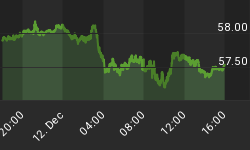by James Hyerczyk
Global stock markets are under pressure overnight which is leading to expectations for a lower opening in the U.S. this morning. Traders are also expected to react to this morning's durable goods and Weekly Initial Claims data. Flight to safety buying is helping to underpin the Treasuries. The Dollar is posting gains against the Euro and Dollar-linked currencies. Gold and crude oil are under pressure as investors shed risky assets.
On Wednesday U.S. equity markets closed lower but held onto the low posted earlier in the day after the Federal Reserve said the economy was "proceeding" rather than strengthening like it had said in its last report in April. This change in language helped pressure the stock market but failed to trigger an all out selling frenzy.
Stocks were under pressure since early in the session after a worse than expected home sales report triggered a sell-off. The weakness was fueled by the thought that the weak housing market would derail the U.S. economic recovery. The report showed that perspective buyers left the market after tax incentives were dropped. The number reached its lowest level in 50 years.
The September E-mini S&P broke through a key 50% level last night at 1083.25 and is likely to test the .618 retracement level at 1072.50 if downside momentum continues.
The September E-mini NASDAQ tested its 50% retracement level at 1854.75 overnight. A move through this price could trigger a further break to 1834.50. No doubt the market is being underpinned by the optimism over the release of Apple's new phone.
Losses were limited in the September E-mini Dow on Wednesday but downside momentum overnight indicates the market is likely to complete its 50% retracement to 10073.
The short-term main trend is still up in the equity markets. So far all we've seen is a two-day break into a retracement zone which indicates the move can only be characterized as a normal correction. Looking at the bigger picture however, yields a different assessment. From the April top down to the June low, the markets look bearish, after completing normal 50% retracements of the huge Spring break.
September Treasury Bonds are trading higher overnight in anticipation of a weaker global economy. T-Bonds rallied on Wednesday following the Fed's assessment of the weak economy. The inability to break the T-Bonds after the stock rally is further proof that investors are still suspicious about future corporate profits and the U.S. economy's ability to maintain its growth pace. Expectations are for the market to attempt to break through the last main top at 126'05 especially if today's Weekly Initial Claims Report is weaker than expected.
The September Euro is trading weaker overnight after a slump in Greece bond sales helped escalate worries about European sovereign debt issues.
The Euro finished higher on Wednesday after reversing earlier weakness following a weak assessment of the U.S. economy by the Federal Open Market Committee. Based on the overnight action, it appears that this was short-covering rather than new buying.
Federal Reserve officials downgraded their outlook for the economy, saying that the recovery was "proceeding", not strengthening as they had said in their previous FOMC policy statement in April. The change in the statement indicates that there was less then favorable data reported since the committee last met.
In addition to the change in the view of the economy, the Fed left the target federal funds rate at the current range of zero to 0.25% and reiterated that interest rates will remain low for an extended period. Policymakers put some blame on the slowdown in the economy on the European debt crisis.
The late session break in the Dollar on Wednesday against the Euro reversed earlier bullishness. At the mid-session, the Greenback was trading mixed against most currencies. Trading was light, but the Dollar did get a boost following a plunge in the U.S. housing market. Gains probably would have been greater if volume was at average levels.
Early during the session the Euro broke after a report showing a drop in new U.S. home sales weighed heavily on higher risk assets. Traders looked for safety in the Dollar as the report indicated a still weak U.S. economy and the possibility of a double-dip recession in the housing market.
At the mid-session, the Euro was nearing a key retracement zone at 1.2174 to 1.2102 but never quite reached this level. The turnaround in the Euro suggests that a secondary higher bottom may be forming which indicates buyers may be trying to wrestle the trend away from the sellers.
Although a break into the retracement zone is still possible, upside momentum indicates that the market may make a run at the last swing top at 1.2467. This breakout move will set up a further rally into a major down-trending Gann angle formation at 1.2609.
Overnight action suggests that the Euro may succumb to both fundamental and technical pressure which should help it resume its move into the retracement zone at 1.2171 to 1.2102. Risk sentiment seems to be shifting which means investors will continue to shed risky assets while seeking shelter in the safer U.S. Dollar.
A drop in demand for higher risk assets is pressuring the commodity-linked currencies this morning. Downside pressure is clearly on the Australian, New Zealand and Canadian Dollars. A weakening global economy should keep the pressure on demand for goods and services from these major suppliers of raw materials.
















